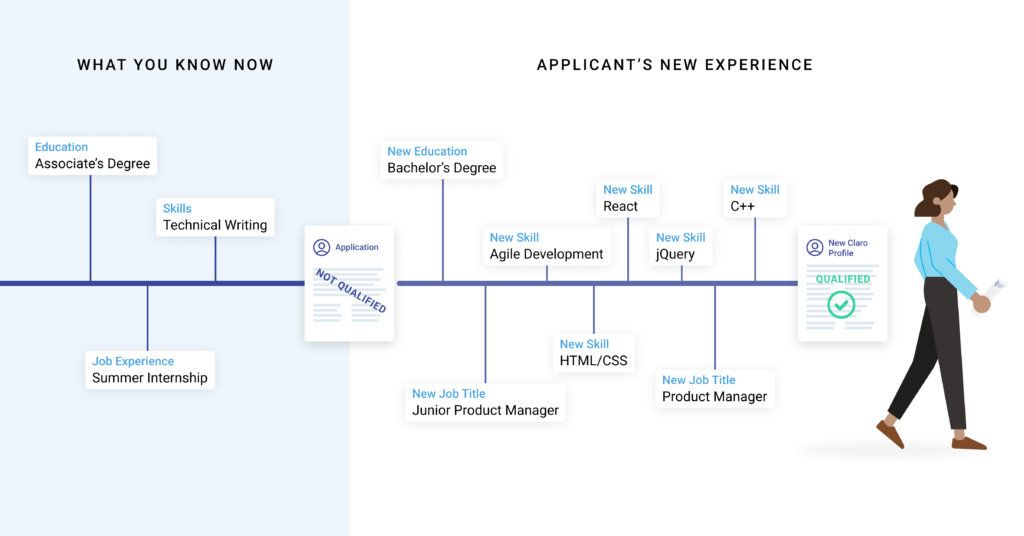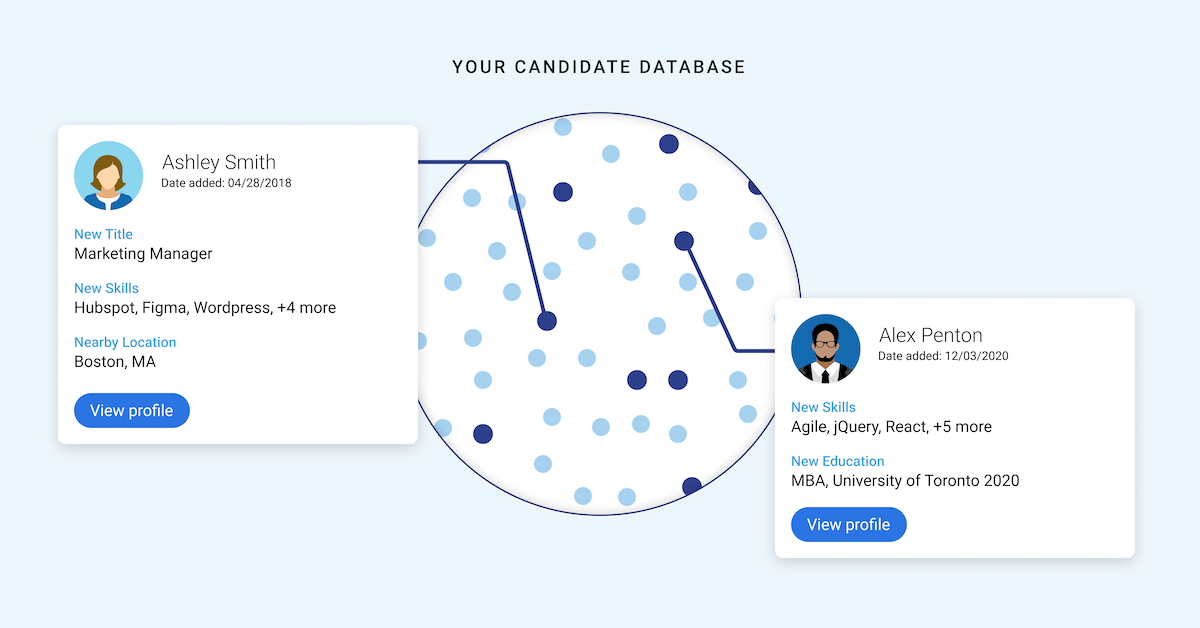While the Great Resignation isn’t as bad as some apocalyptic headlines might have us believe, there is still a huge reshuffling happening in the labor market right now. Great talent is becoming harder to find (and retain). And with 11 million open jobs right now, and plenty of competition, companies will need to get creative if they want a competitive edge.
Step 1: Update your internal candidate database
Whether you have Workday, Avature, ADP, or another human capital management tool, you likely have an entire pool of thousands of former job applicants sitting idly in your database, collecting virtual dust. These are professionals who have expressed a clear interest in working for your company. If they weren’t quite the right fit when they applied, they may have gained the skills and experience to be qualified now.
But there’s no way to know (at least, no efficient way) because most of the time, companies’ candidate databases are wildly outdated. They’re a proverbial graveyard full of resumes and profiles from a few months old to several years old. And let’s be honest, even a six-month-old resume is too old in this fast-moving labor market.

So instead of looking within these databases, most companies spend an exorbitant amount of time and money on advertising their open jobs and scouring LinkedIn, Monster, GitHub, and more for qualified talent. Meanwhile, the cost-of-vacancy continues to rise while the jobs remain unfilled.
It’s all massively inefficient. And with unfilled jobs taking an average of 36 days and $4,425 to fill, companies who figure out how to recruit from their internal candidate databases will quickly gain an edge over their competitors during the Great Resignation and beyond.
In this article, we’ll show you how to keep your database up-to-date and use it for recruiting.
Keep your candidate database up-to-date with real-time data
Imagine having a real-time talent pool full of people who have already expressed interest in working for your organization right at your fingertips 24/7.
Sounds pretty great, right? By integrating real-time labor market data into your internal HCM, you can make that a reality for your company.
For example, some companies use Claro Analytics for this exact thing. The Google of labor market data, Claro Analytics is a high-powered search engine that pulls workforce data from over 10 million sources every day and indexes it in a way that makes it lightning fast to use. Users can search for everything from talent market availability, to salary data, demographics data, and more – in literal seconds.
When companies integrate Claro Analytics' real-time data with their candidate database, all of those resumes and profiles from previous applicants stay continuously up-to-date. That includes their skills, work experience, job titles, locations, compensation, demographics, and more.

With Claro Analytics' Job Seeking Sonar, you could even make a list of the top talent you’d like to hire within your database and monitor their passive job seeking behavior. As soon as they begin exhibiting signs of wanting to leave their current job, you can reach out – before your competition does.
Use your candidate database as a shortlist for recruiting with Claro Analytics' real-time intelligence
Think of your internal database as a short list of “warm leads,” as a salesperson might say. These are people who have expressed interest in working for your company before, so chances are they’d be more amenable to a discussion with you now than someone who may be unfamiliar with your company.
Plus, when the hundreds or thousands of profiles in your database are consistently mapped to and updated with external Labor Market Intelligence, you can really drill down to specific skills and experience and reduce your time-to-fill.
“The application process is painful enough for the candidate on their first go-round. Expecting them to come back and update their profile in your company’s Talent Community six months later is unrealistic.”
Phyllis Makredes Afendoulis, COO at Claro Analytics
Most companies don’t use their internal databases efficiently for recruiting. Until now, there hasn’t been an easy way to know what those applicants are currently doing or what skills they may have gained since applying at your company. Because even if job seekers keep their LinkedIn or Indeed profiles updated, they’re probably not returning to your application portal to update their resumes there, too.
Your candidate database of previous applicants is already a powerful source of potential talent. Combined with labor market data that’s updated every day, your company can create its own private talent pool.
Looking to integrate real-time data into your candidate database? Claro Analytics can help!
